With boatyards you pay for “lay days”, which are the days your boat is laying on the hard (on dry land instead of water). About $40/day for our size boat. So this meant haul-out time is work as fast as you can to get as much work done as possible. In July we’re planning a 1-month cruise up the west coast of Vancouver Island, so there were a number of projects that had to get done.

For 1 week I got into a routine of going to Canal boatyard every day. On weekdays I woke up at 7am, went to work from 8am-4:15pm, and then started my second shift of the day at the boatyard from 5pm to 10 or 11pm.
Counting my day job I basically worked a 90 hour week. I don’t think that’s something to brag about, rather it’s a consequence of my relative amateur skills at boat repair, and poor job at estimating task size.
It was exhausting but I learned a ton in a week and got an amazing amount done.
Projects Completed:
- Removed old broken speed transducer and installed new one.
- Serviced all 9 seacocks – disassembling the bronze ones and lubing.
- Did some draining of a weeping rudder and then epoxy + 4200 patched, painted.
- Installed new cockpit scuppers and hose.
- Installed new hose for toilet raw water intake.
- Touched up bottom paint for the transducer, keel and rudder.
- Cleaned prop shaft and installed new aluminum anode (replacing a zinc, to supplement existing 2 zincs which were still 80% intact. Aluminum because we’re in fresh water currently).
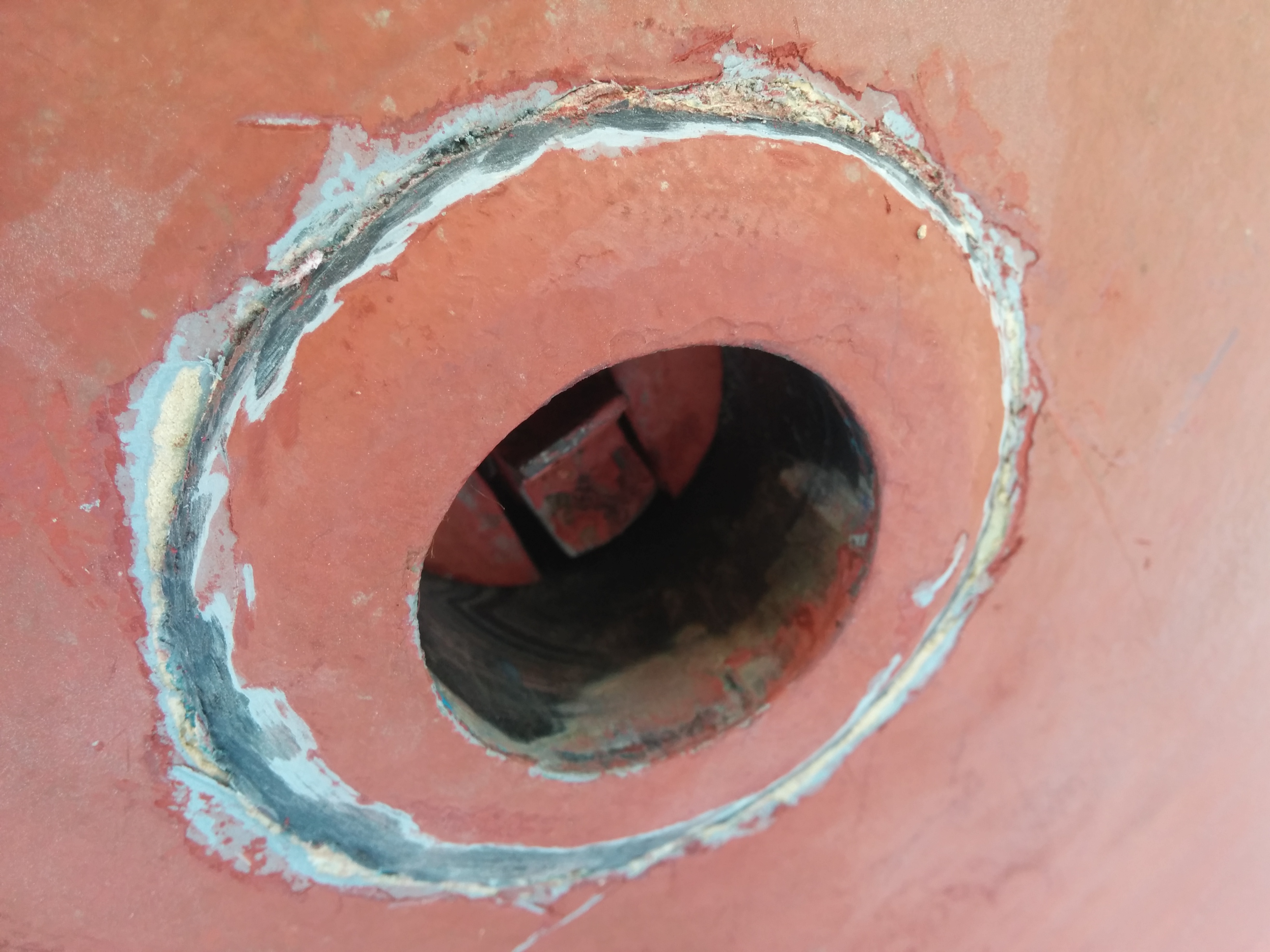
Getting the old speed transducer out of the hull was one of the toughest jobs
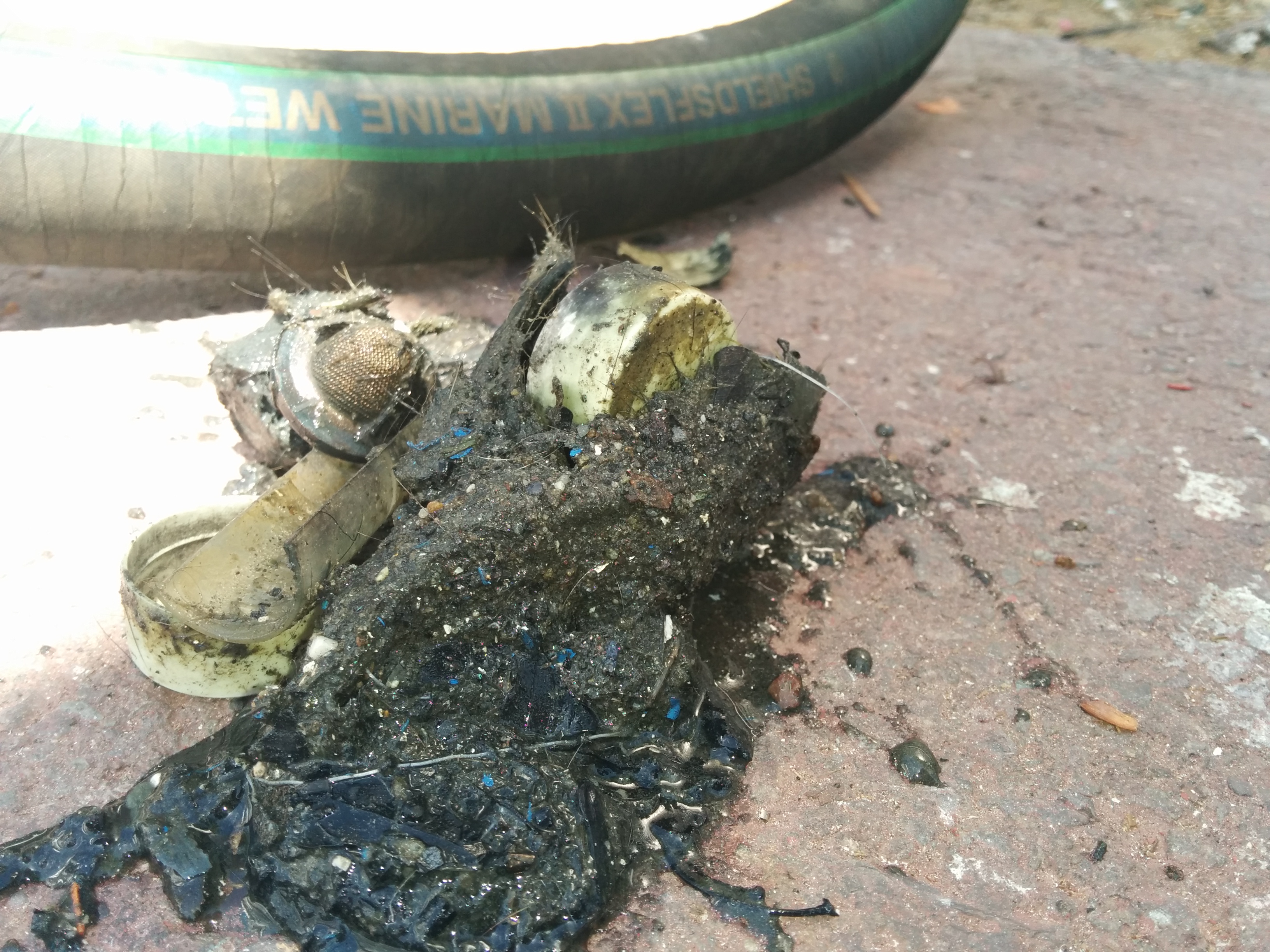
Yeah, this is why the scupper hoses needed replacing – a whole bunch of junk had clogged them up!
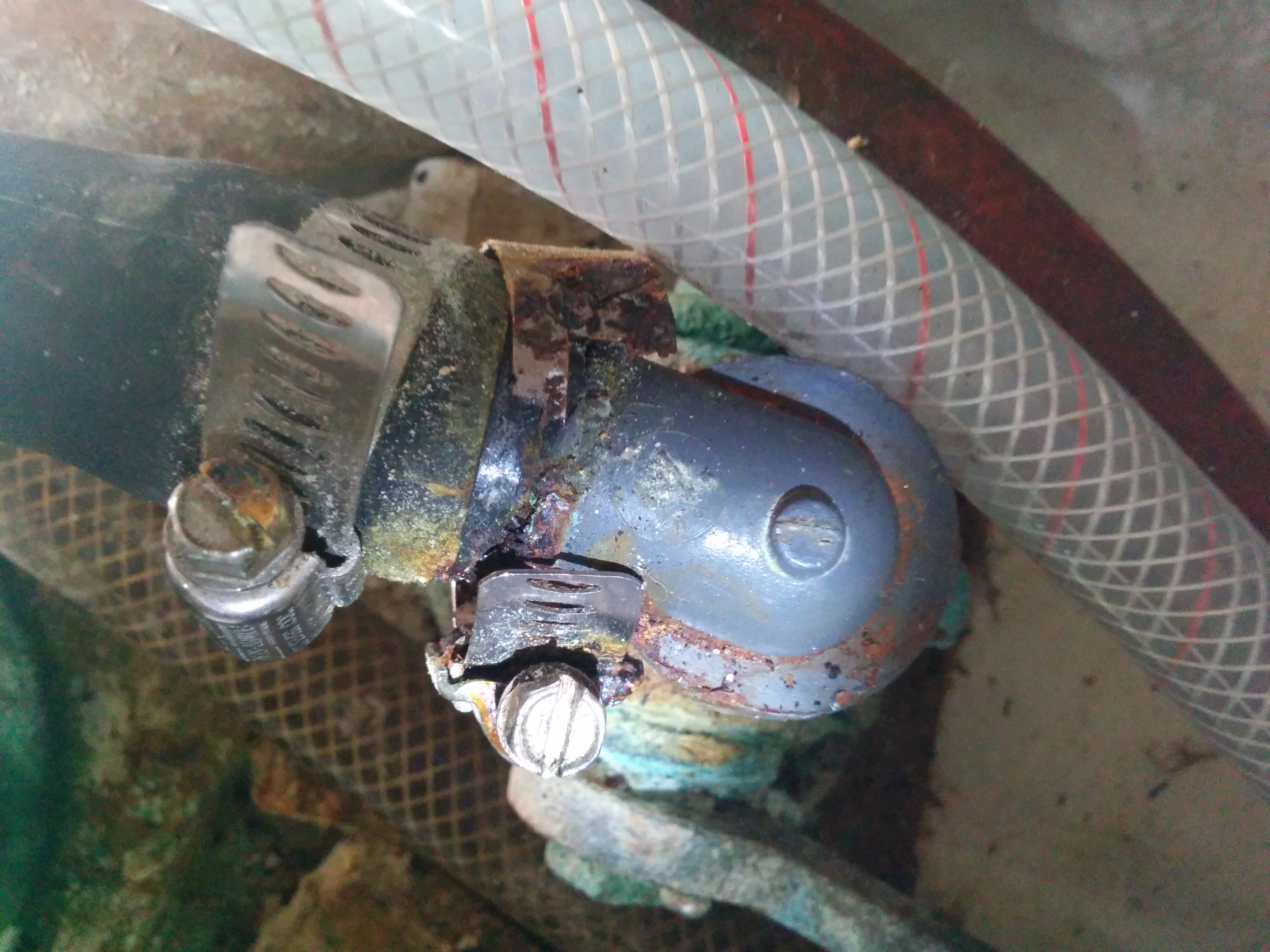
Corroded hose clamp that snapped as soon as I tried to unscrew it!
Things that didn’t go well:
- I was unsuccessful at unseizing the head sink seacock. I tried about 10 different things but nothing worked, and I wasn’t willing to move on to destructive methods (because that would require replacing the seacock, backing plate, and possibly thru-hull – which I didn’t have time for).
- Mixing bottom paint by hand with a paint stirrer is trickier than I thought, and messy.
- I did a bit of a messy job with the transducer thruhull, since I cut through the gelcoat a bit when trying to remove the old one. I covered it with a coat of epoxy though for good measure, and the hull is solid fiberglass in this area.

Mixing a quart of bottom paint ($80 for this liquid gold!)
It’s hard to say which job was the hardest, because all of them were hard in some ways.
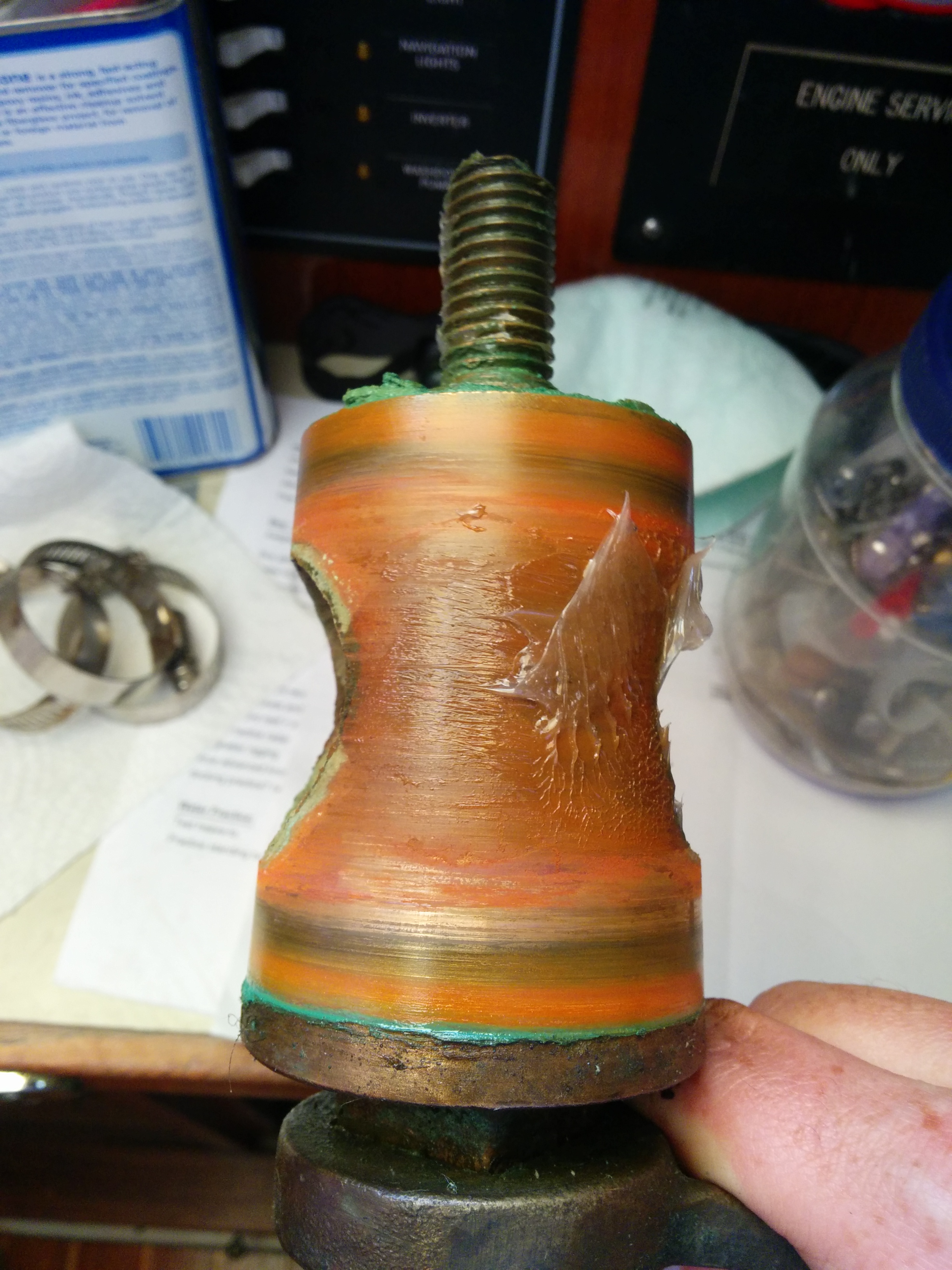
Lubing up the seacocks. It’s a dirty job but somebody’s gotta do it!
I think I should start measuring project sizes in the number of paper towel rolls they require. This 1-week haul-out was a 3 paper towel roll job. Cleaning one seacock uses about 3 sheets (and there were 9 of them) and epoxying and painting also uses up a fair number.
A Weeping Rudder
The water in the rudder was the unpleasant surprise of the haul-out. We hadn’t found that during the survey in February, but that had just been a short haul-out. I emailed the surveyor and he assured me water in rudders is a very common issue, and I should be okay putting off a true fix until a fall haul-out. That will require dropping the rudder, dremeling out about a ¼ inch around the rudder shaft, and filling that with epoxy or 5200.
To investigate the issue and temporarily dry it out I drilled a few 1/4″ holes and let it drip for 4 days, then sealed up with thickened epoxy and 4200.
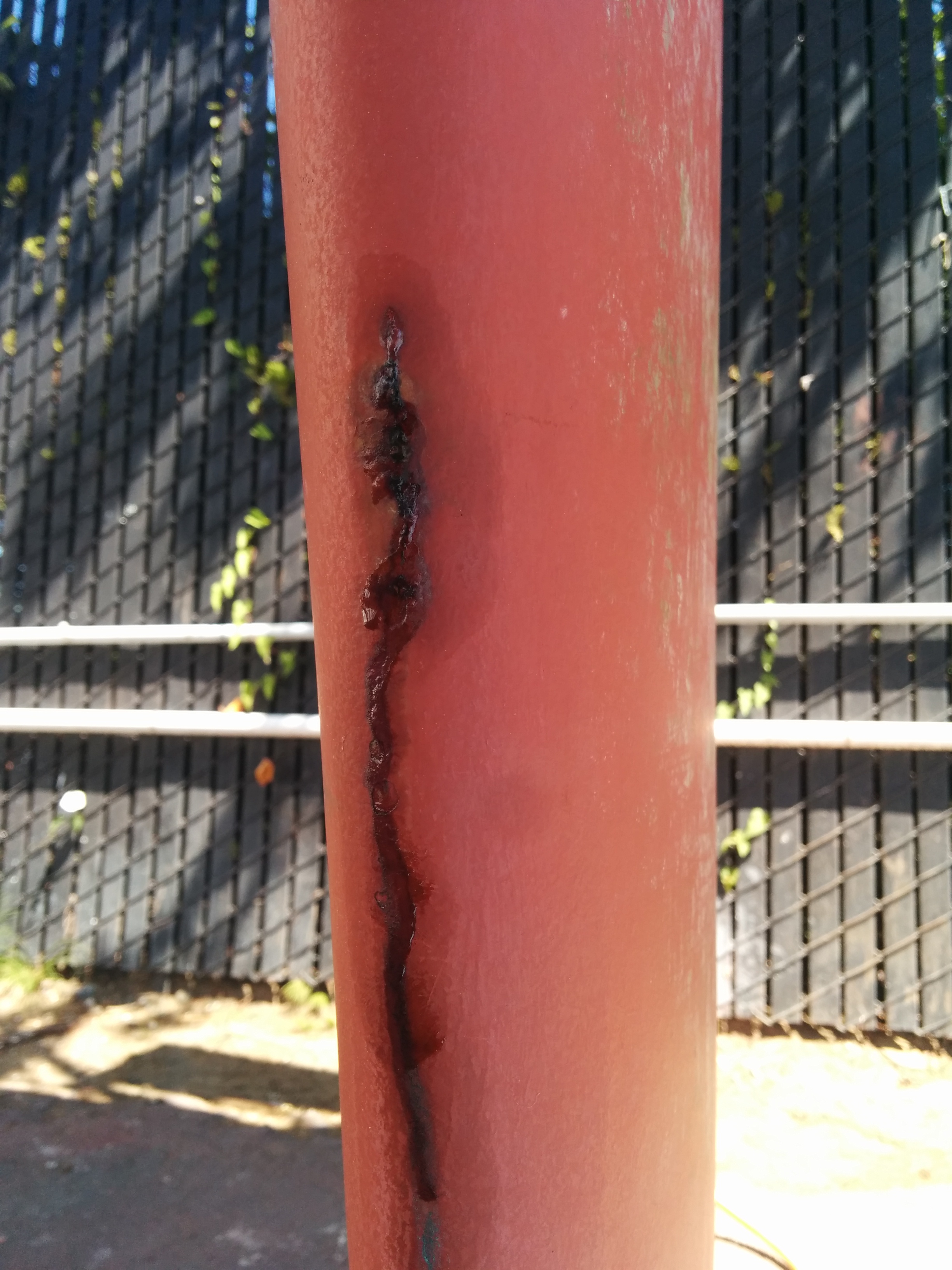
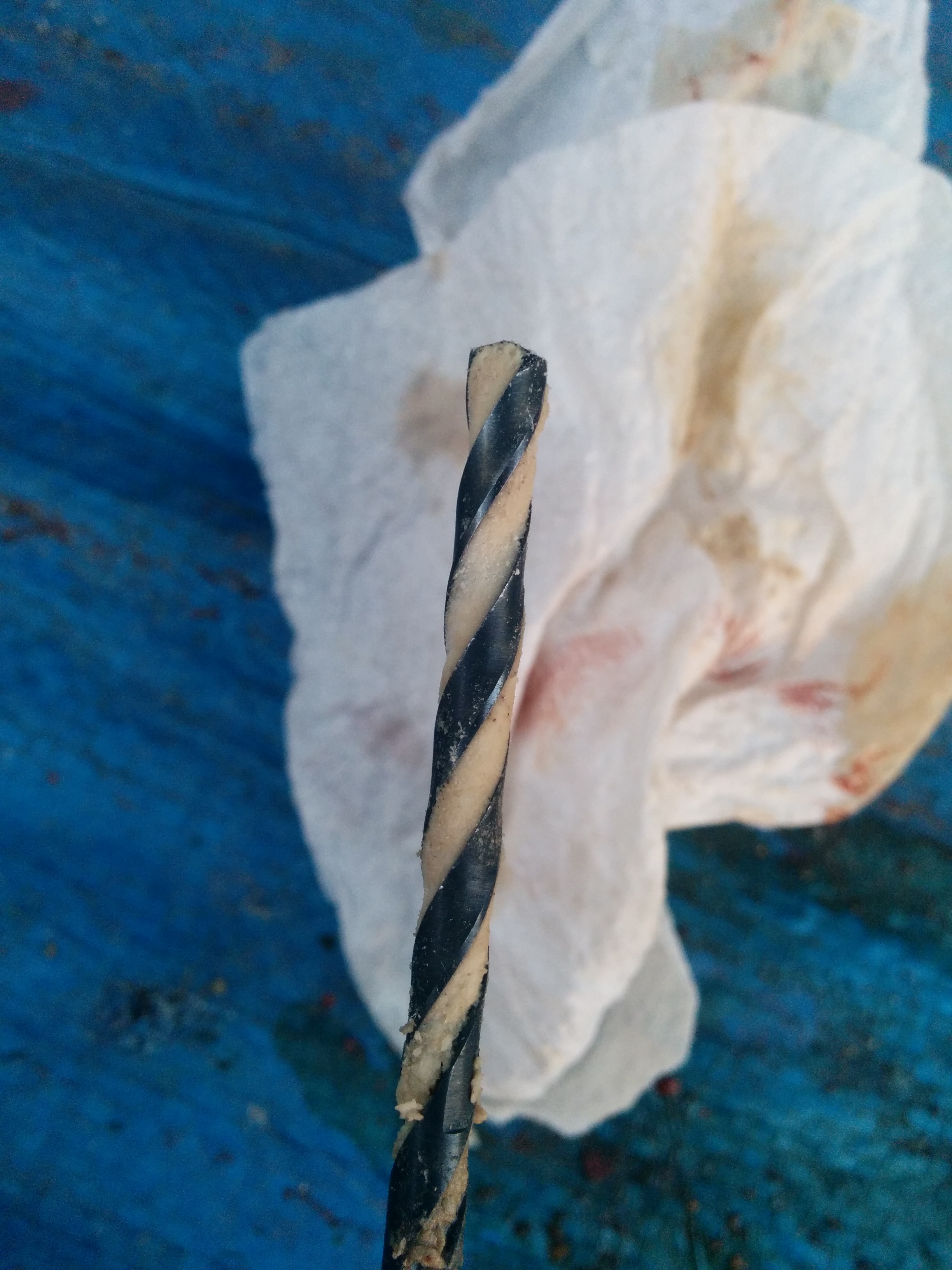
A Moment of Panic
When we relaunched a week later on Friday I had an “oh sh*t” moment as I checked the seacocks for leaks. The 3 engine area seacocks all were dripping. Slow drips, but I was a little panicked as I couldn’t tell yet how serious the leaks were and whether I’d need to rehaul, ruining our weekend plans and adding another big expense.
Both cockpit scuppers were leaking at the elbow joint fitting to the seacock, so I just closed those valves. The engine intake seacock was more worrying because it was dripping from the seacock tapered barrel itself. I had cleaned and lubed this seacock, so I don’t know why the fitting wasn’t tight enough – it may need lapping (polishing to improve the metal-to-metal fit). I tightened it up a bit and the leak slowed to about what it was before haul-out – I had slow leaks on at least 2 of these before anyway. I’m going to work on them some more, but fortunately the leaks slowed down to almost non-existent.
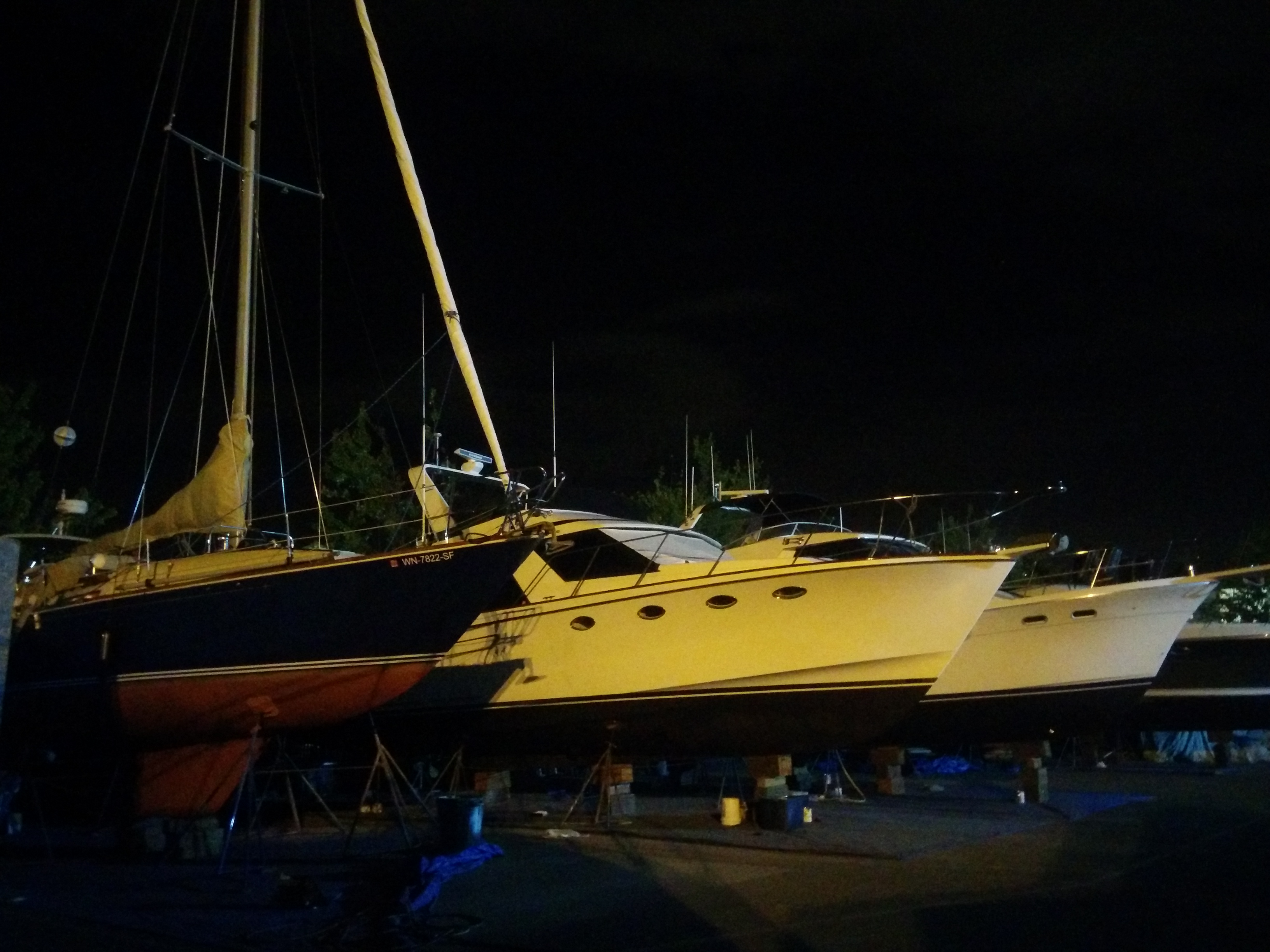
After a long day’s work in a sea of powerboats.

Your experience with the tapered plug seacocks is why I really like the ball valve type. I have 4 maralon ball valve seacocks, and one bronze w/chrome ball and teflon seat. They never seize nor leak.
Isn’t there an adjustment on the tapered plug-style valves? As you mention, it is possible to renew the mating surfaces and improve the seal of these.